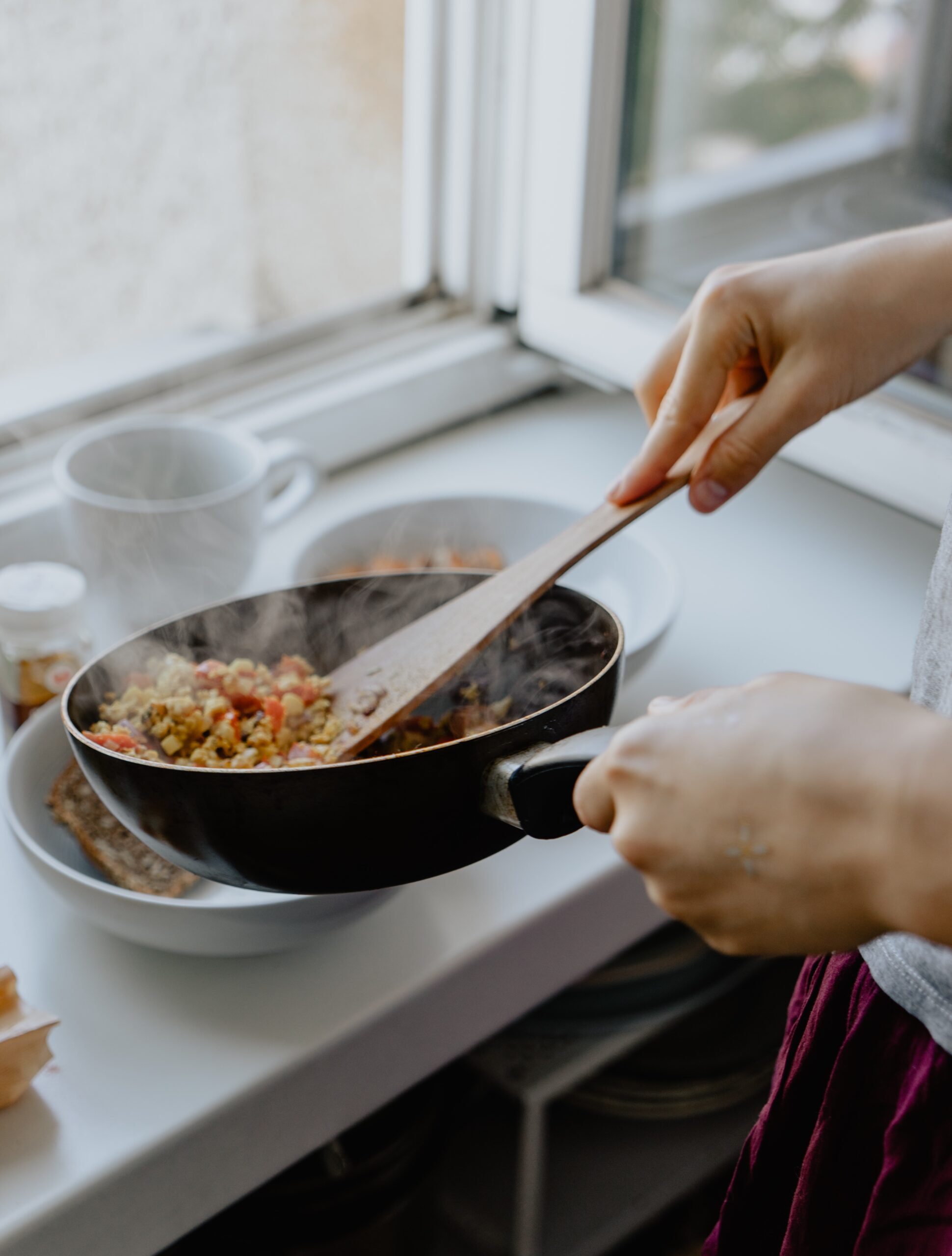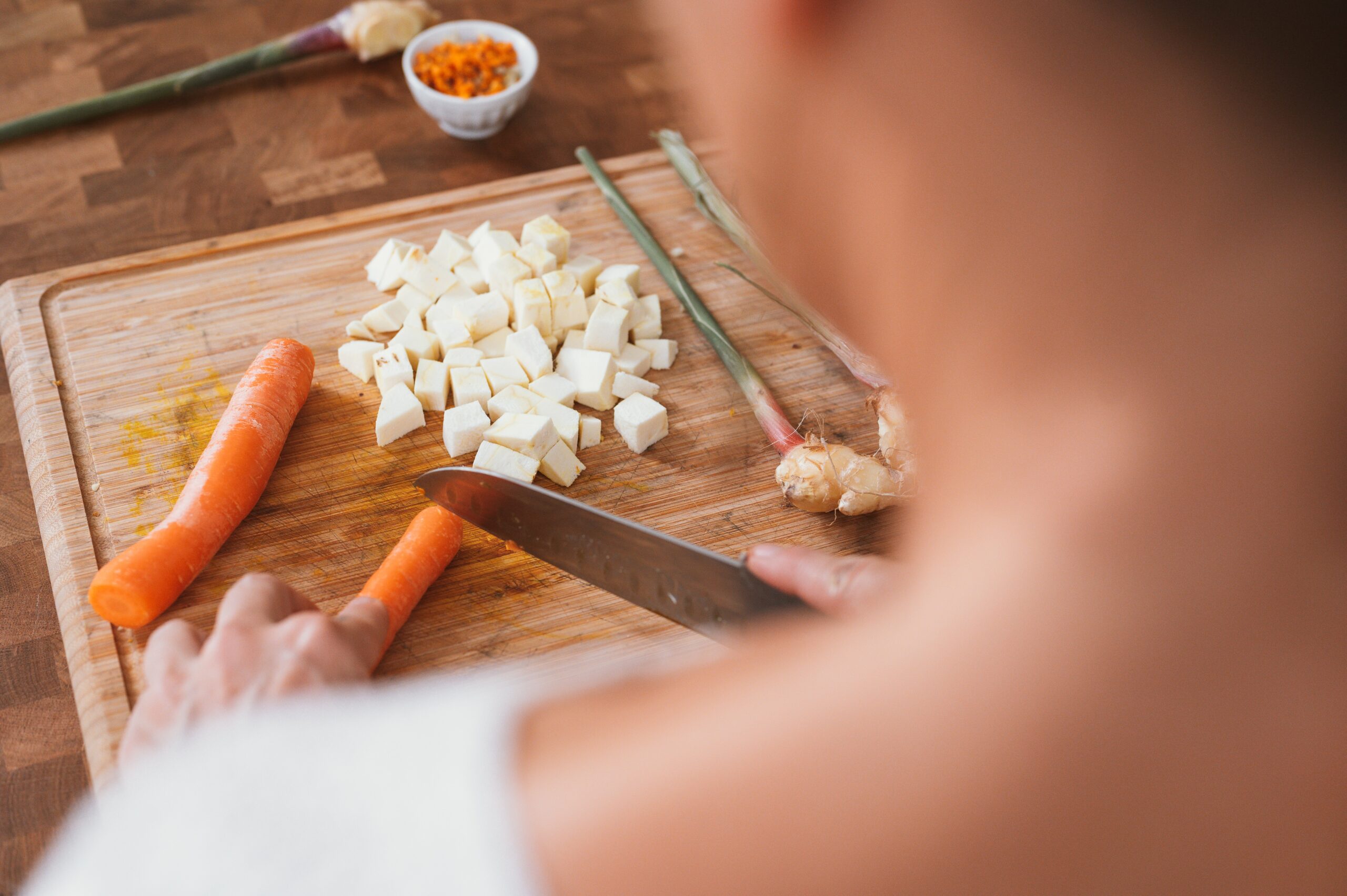Looking to upgrade your cookware for induction cooking but not sure where to start? Look no further! We have all the answers to your burning questions about the best cookware for induction cooking. Whether you’re concerned about safety or looking for the highest quality options, we’ve got you covered. So sit back, relax, and let us guide you to the perfect cookware for your induction stovetop!

This image is property of images.unsplash.com.
Factors to Consider
When shopping for induction cookware, there are several factors that you should take into consideration to ensure that you make the right choice. These factors include the material, size, weight, and compatibility of the cookware.
Material
The material of the cookware plays a crucial role in its performance on induction cooktops. Some common materials that are suitable for induction cooking include stainless steel, cast iron, hard-anodized aluminum, and copper. Each material has its own advantages and disadvantages, which we will explore in more detail later in this article.
Size
The size of the cookware is another important factor to consider. Depending on your cooking needs, you may require different sizes of pots and pans. It is important to choose cookware that is large enough to accommodate your cooking needs, but not so large that it becomes difficult to handle or store.
Weight
The weight of the cookware is something that is often overlooked, but it can have a significant impact on your cooking experience. Cookware that is too heavy may be difficult to handle, especially when it is filled with food. On the other hand, cookware that is too lightweight may not distribute heat evenly, leading to uneven cooking results.
Compatibility
Not all cookware is compatible with induction cooktops. Induction cooktops work by using electromagnetic fields to heat the cookware directly, so the cookware must be made of a magnetic material in order to work. Before purchasing any cookware, it is important to check if it is specifically labeled as “induction-compatible” or if it has a magnetic base.
Popular Materials for Induction Cookware
Now that we have discussed the factors to consider when choosing induction cookware, let’s explore some of the most popular materials used for induction cookware.
Stainless Steel
Stainless steel is one of the most commonly used materials for induction cookware. It is durable, non-reactive, and resistant to rust and corrosion. stainless steel cookware often comes with an aluminum or copper core, which helps to distribute heat evenly. However, stainless steel cookware can be more expensive compared to other materials.
Cast Iron
Cast iron cookware is known for its excellent heat retention and even heat distribution. It is highly durable and can withstand high cooking temperatures. Cast iron cookware is also versatile and can be used on both induction cooktops and in the oven. However, cast iron cookware is quite heavy and requires special care to prevent rusting.
Hard-Anodized Aluminum
Hard-anodized aluminum cookware is lightweight, yet extremely durable. It has excellent heat distribution properties and is resistant to scratches and warping. Hard-anodized aluminum cookware is often coated with a nonstick surface, making it easy to clean. However, it is important to note that not all hard-anodized aluminum cookware is induction-compatible, so it is essential to check for compatibility before purchasing.
Copper
copper cookware is known for its excellent heat conductivity, allowing for precise temperature control. It heats up quickly and cools down rapidly, offering great cooking responsiveness. However, copper cookware is quite expensive and requires regular maintenance to keep it looking its best. Additionally, not all copper cookware is induction-compatible, so it is important to check before purchasing.
Advantages and Disadvantages of Different Materials
Now that we have discussed the popular materials for induction cookware, let’s delve into the advantages and disadvantages of each material.
Stainless Steel
Advantages of stainless steel cookware include its durability, resistance to rust and corrosion, and non-reactive nature. Stainless steel cookware is also dishwasher safe and compatible with all types of cooking utensils. However, stainless steel alone does not have excellent heat distribution properties, which is why many stainless steel cookware sets come with a layer of aluminum or copper in the base.
Disadvantages of stainless steel cookware include its relatively higher cost compared to other materials and its tendency to develop hot spots if not properly preheated. Additionally, stainless steel cookware can be prone to discoloration and staining if not properly cared for.
Cast Iron
Advantages of cast iron cookware include its exceptional heat retention and even heat distribution. Cast iron cookware can be used on all types of stovetops, including induction, and can also be used in the oven. It is highly durable and can last for generations with proper care. Cast iron cookware also adds a unique flavor to dishes, making it ideal for certain types of cooking, such as searing and braising.
Disadvantages of cast iron cookware include its weight, which can make it difficult to handle, especially when filled with food. Cast iron cookware also requires special care to prevent rusting and may need to be seasoned periodically to maintain its nonstick properties.
Hard-Anodized Aluminum
Advantages of hard-anodized aluminum cookware include its lightweight nature, excellent heat distribution properties, and resistance to scratches and warping. Hard-anodized aluminum cookware is often coated with a nonstick surface, making it easy to clean and requiring less oil for cooking. It is also compatible with induction cooktops, making it a versatile choice.
Disadvantages of hard-anodized aluminum cookware include its relatively higher cost compared to regular aluminum cookware and the fact that not all hard-anodized aluminum cookware is induction-compatible. It is important to check for compatibility before purchasing.
Copper
Advantages of copper cookware include its excellent heat conductivity and responsiveness, allowing for precise temperature control. Copper cookware heats up quickly and cools down rapidly, making it ideal for delicate cooking processes. It is also aesthetically pleasing and adds a touch of elegance to any kitchen.
Disadvantages of copper cookware include its high cost and the need for regular maintenance. Copper cookware requires periodic polishing to keep it looking its best, and it should not be used with acidic foods, as this can cause a reaction. Additionally, not all copper cookware is induction-compatible, so it is important to check before purchasing.
Best Cookware Sets for Induction Cooking
Now that we have explored the different materials and their advantages and disadvantages, let’s take a look at some of the best cookware sets available for induction cooking.
Top-rated Stainless Steel Cookware Sets
-
Brand A: This stainless steel cookware set is highly rated for its durability, even heat distribution, and compatibility with induction cooktops. It features a tri-ply construction with an aluminum core for excellent heat conductivity.
-
Brand B: Another top-rated stainless steel cookware set, this option offers a polished stainless steel exterior and a nonstick interior for easy cleaning. It also includes a variety of different-sized pots and pans to suit all cooking needs.
High-quality Cast Iron Cookware Sets
-
Brand C: This cast iron cookware set is known for its exceptional heat retention and even heat distribution. It comes pre-seasoned for a nonstick cooking surface and includes a range of different-sized skillets and Dutch ovens.
-
Brand D: Another high-quality cast iron cookware set, this option is made with heavy-duty cast iron to ensure durability and longevity. It features a smooth enamel coating for easy cleanup and is compatible with induction cooktops.
Durable Hard-Anodized Aluminum Cookware Sets
-
Brand E: This hard-anodized aluminum cookware set is highly durable and scratch-resistant. It features a nonstick interior for easy food release and is compatible with induction cooktops. The set includes a variety of pots, pans, and lids.
-
Brand F: Another durable hard-anodized aluminum cookware set, this option offers exceptional heat distribution and a nonstick coating for easy cooking and cleaning. It also includes a range of different-sized cookware pieces for versatility.
Premium Copper Cookware Sets
-
Brand G: This premium copper cookware set is handcrafted by skilled artisans and offers exceptional heat conductivity. It features a stainless steel interior for easy maintenance and has a beautiful polished copper exterior.
-
Brand H: Another premium copper cookware set, this option is made with a thick copper exterior and a stainless steel interior. It includes a variety of pots, pans, and lids, and is designed for both functionality and aesthetic appeal.

This image is property of images.unsplash.com.
Individual Cookware Pieces for Induction Cooking
If you prefer to mix and match your cookware rather than purchasing a complete set, here are some top-rated individual cookware pieces for induction cooking:
Best Stainless Steel Pots and Pans
-
Brand I: This stainless steel saucepan is highly rated for its even heat distribution and compatibility with induction cooktops. It features a comfortable handle and a tight-fitting lid.
-
Brand J: Another top-rated stainless steel pot, this option is designed for versatile cooking. It comes with a steamer insert and a tempered glass lid, making it ideal for steaming vegetables and preparing sauces.
Top-rated Cast Iron Skillets
-
Brand K: This cast iron skillet is known for its excellent heat retention and even heating. It has a pre-seasoned interior for a natural nonstick surface and is compatible with induction cooktops.
-
Brand L: Another top-rated cast iron skillet, this option offers a large cooking surface and a long handle for easy maneuvering. It is compatible with all stovetops, including induction, and can also be used in the oven.
High-quality Hard-Anodized Aluminum Sauté Pans
-
Brand M: This hard-anodized aluminum sauté pan is highly durable and scratch-resistant. It features a nonstick interior for easy food release and a comfortable handle for safe handling.
-
Brand N: Another high-quality sauté pan, this option is made with hard-anodized aluminum for excellent heat distribution. It has a nonstick surface and a deep design, making it ideal for sautéing, frying, and simmering.
Premium Copper Sauce Pans
-
Brand O: This premium copper saucepan is handcrafted with a copper exterior and a stainless steel interior. It offers excellent heat conductivity and precise temperature control, making it perfect for delicate sauces and reductions.
-
Brand P: Another premium copper saucepan, this option features a thick copper exterior and a stainless steel interior. It has a comfortable handle and a snug-fitting lid, allowing for efficient cooking and easy cleanup.
Benefits of Using Induction Cookware
Choosing the right cookware is not only important for ensuring optimal cooking results, but it can also offer several benefits. Here are some of the benefits of using induction cookware:
Energy Efficiency
One of the main advantages of using induction cookware is its energy efficiency. Induction cooktops heat up the cookware directly, without wasting energy on heating the surrounding air. This can result in faster cooking times and lower energy consumption, ultimately saving you money on your utility bills.
Even Heating
Induction cookware provides excellent heat distribution, resulting in more even cooking. The magnetic field created by the induction cooktop ensures that the heat is evenly distributed across the entire surface of the cookware, eliminating hot spots and reducing the risk of burning or undercooking your food.
Safety
Induction cookware is known for its safety features. Since the heat is generated directly in the cookware, the surrounding surface of the cooktop remains cool to the touch. This greatly reduces the risk of burns and other accidents in the kitchen. Additionally, induction cooktops have built-in safety features, such as automatic shut-off and child lock functions, providing an extra layer of protection.
Precision Cooking
Induction cookware allows for precise temperature control, making it ideal for delicate cooking processes. With the ability to adjust the heat instantly and accurately, you can easily achieve the desired cooking results, whether it’s simmering a sauce or searing a steak. The precise temperature control also helps to prevent overcooking or drying out your food.

This image is property of images.unsplash.com.
Cleaning and Maintenance Tips
Proper cleaning and maintenance of your induction cookware will help to prolong its lifespan and ensure optimal performance. Here are some general guidelines and specific care tips for different materials:
General Guidelines
-
Always follow the manufacturer’s instructions for cleaning and maintenance.
-
Allow the cookware to cool completely before cleaning.
-
Use gentle dish soap and warm water to clean your cookware. Avoid abrasive cleaners or scouring pads, as they can cause scratches or damage the surface.
-
To remove stubborn stains or burnt-on food, soak the cookware in warm, soapy water for a few minutes before scrubbing with a non-abrasive sponge or brush.
-
Avoid using metal utensils, as they can scratch the surface of your cookware. Opt for wooden or silicone utensils instead.
Specific Care for Different Materials
-
Stainless Steel: To keep stainless steel cookware looking its best, regularly polish it with a stainless steel cleaner. Avoid using chlorine-based cleaners or bleach, as they can cause discoloration. If your stainless steel cookware develops white spots or streaks, you can use a mixture of vinegar and water to remove them.
-
Cast Iron: After each use, wash your cast iron cookware with a stiff brush and hot water. Avoid using soap, as it can remove the seasoning. To prevent rusting, dry the cookware thoroughly and lightly coat it with cooking oil before storing.
-
Hard-Anodized Aluminum: Hard-anodized aluminum cookware is generally easy to clean due to its nonstick surface. You can use a mild dish soap and a soft sponge or cloth to clean it. Avoid using abrasive cleaners or scrub brushes, as they can scratch the nonstick coating.
-
Copper: To maintain the shiny appearance of copper cookware, regularly polish it with a copper cleaner or a mixture of lemon juice and salt. Avoid using acidic or abrasive cleaners, as they can damage the copper.
Frequently Asked Questions
Here are some frequently asked questions about induction cookware:
Can I Use Non-Induction Cookware on an Induction Cooktop?
No, non-induction cookware is not compatible with induction cooktops. Induction cooktops require cookware with a magnetic base in order to generate heat. Non-magnetic cookware, such as aluminum or glass, will not heat up on an induction cooktop.
Can I Use Induction Cookware on Other Types of Stoves?
Yes, induction cookware can be used on other types of stoves, such as gas or electric. The magnetic base of induction cookware allows it to conduct heat on all types of stovetops. However, it is important to note that not all cookware is compatible with induction cooktops, so it is always best to check before using it on a different type of stove.
Can Induction Cookware Be Used in the Oven?
Yes, many types of induction cookware are oven-safe. However, it is important to check the manufacturer’s instructions for the specific cookware to ensure that it is safe to use in the oven. Some cookware may have temperature limitations or may require the removal of certain parts, such as handles or lids, before placing it in the oven.
How Do I Test If My Cookware is Induction Compatible?
To test if your cookware is induction-compatible, simply place a magnet on the bottom of the cookware. If the magnet sticks to the bottom, then your cookware is suitable for induction cooking. If the magnet does not stick, then your cookware is not compatible and will not work on an induction cooktop.
Conclusion
Choosing the best cookware for induction cooking requires careful consideration of the material, size, weight, and compatibility. Stainless steel, cast iron, hard-anodized aluminum, and copper are among the popular materials used for induction cookware, each with its own advantages and disadvantages. Whether you opt for a complete cookware set or individual pieces, make sure to select high-quality options that are specifically labeled as induction-compatible. Induction cookware offers numerous benefits, including energy efficiency, even heating, safety, and precision cooking. To keep your induction cookware in top condition, follow the manufacturer’s cleaning and maintenance guidelines, and always use the appropriate cleaning products and utensils. By choosing the right cookware and properly caring for it, you can enhance your induction cooking experience and achieve delicious results every time.

